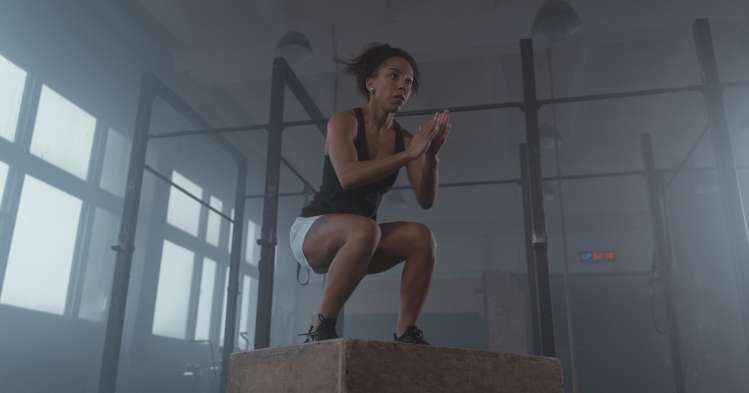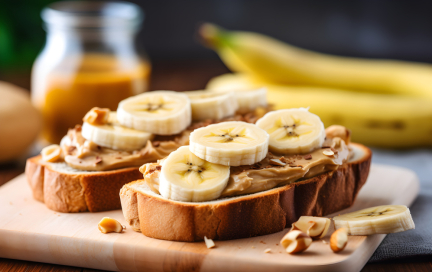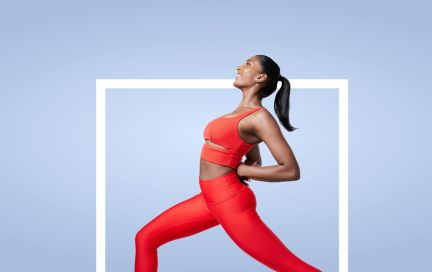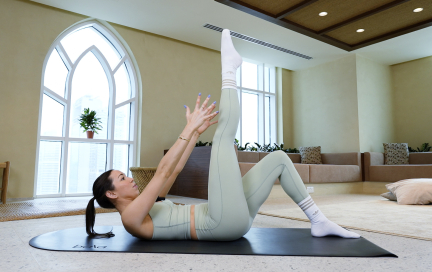{{ banner_block|raw }}
What tasks does functional training solve and what is it?
Life puts your body to the test every single day. Running to catch the bus. Carrying groceries up the stairs. Lifting your toddler out of a car seat. These real-world movements demand full-body strength, balance, and stamina — but most gym machines don’t train you for any of it.
That’s where functional training comes in. It blends cardio and strength work to help your body move the way it’s meant to. Best of all, functional training is for everyone. Whether you’re just getting started or already fit, 25 or 65, this kind of training meets you where you are — and helps you move better through every part of your life.
Functional training is a powerful tool to boost your daily activity
The word functional in “functional training” indicates that the exercises are related to the functions that a person performs. Simply put, with everyday movements.
You leave the entrance and push a heavy door, bend over, picking up a fallen object from the ground, balance on a slippery surface, carry a baby in your arms, etc… - by performing all these functional actions, you use several large muscle groups at once. It is impossible to simulate such movements on a simulator. While the emphasis on functional training is placed on those movements that we use in everyday life - squats, lunges, bends. This is the main advantage of functional training.
After all, you can disappear for hours in the gym, pumping up your deltoids, core or lats, and be completely unprepared for the loads that you encounter day after day. Or you can download a mobile application with home workouts to your phone and enjoy a high-quality functional workout without leaving your home.
Functional training is a magic pill to boost your daily activity
Regular functional exercises help develop the physical qualities that are necessary in everyday life.
Endurance
When you move at a moderately fast pace — think brisk circuits, bodyweight combos, or quick functional drills — your heart rate goes up, your breathing speeds up, and your entire cardiovascular system kicks into gear. Over time, your heart gets stronger, your circulation improves, and your body becomes more efficient at using oxygen. That means better endurance — not just for workouts, but for life.
Strength endurance
Functional training includes a solid dose of strength work — from bodyweight moves to exercises with dumbbells, kettlebells, and barbells. As you gradually increase the load, your muscles adapt, grow, and get stronger. The result? More power, better muscle definition, and real-life strength.
Flexibility
Most functional exercises are compound movements — meaning they engage multiple joints and major muscle groups at the same time. That includes both the large, visible muscles and the smaller, deeper ones that support your movement. Over time, this kind of training improves joint mobility and increases muscle elasticity, helping you move with more freedom and less stiffness.
One of the biggest perks of functional training? It torches calories fast. Because the workouts are dynamic and full-body, your metabolism ramps up and your body burns more energy, even after you’re done. And guess what becomes your fuel? Stored fat. The more consistently you train, the more fat you burn — helping you drop excess weight and build lean, lasting strength.
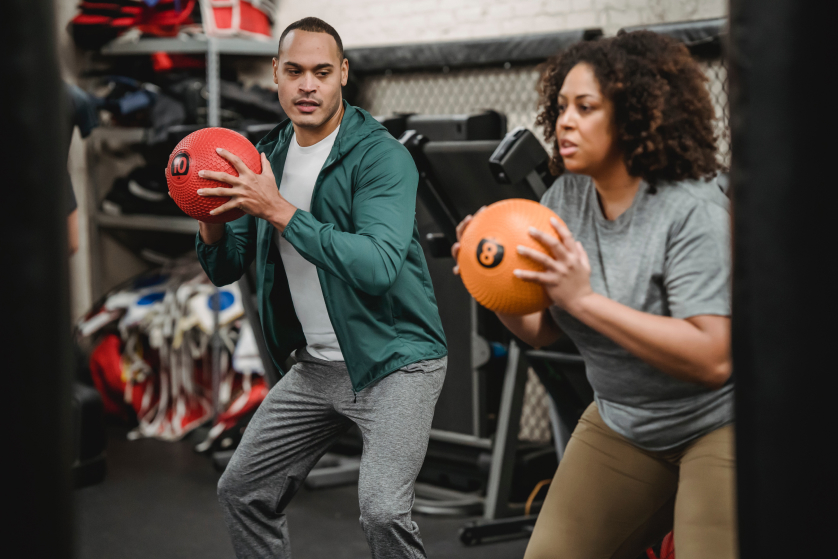
Functional training is one of the best ways to build overall strength, mobility, and endurance. It gives you a solid foundation to move better in everyday life and feel stronger all around.
When to take it slow (and talk to your doctor first)
Functional training is safe and scalable for most people — but in some cases, it’s better to hold off or modify your routine. Here’s when to be cautious:
If you’re currently sick or recovering from a cold or virus
If you have cardiovascular or respiratory conditions
If you have high blood pressure that’s not well managed
If you have injuries or chronic issues in your joints, spine, or musculoskeletal system
If you’ve been diagnosed with kidney prolapse or other internal conditions (especially when jumping or doing high-impact moves)
If you’re pregnant or postpartum — always consult your healthcare provider before starting a new workout program
One style, endless options: Why functional training fits your life
One of the best things about functional training? It works anywhere — at home, outdoors, in the gym, or even in your hotel room while traveling. You can use just your bodyweight or add equipment like dumbbells, kettlebells, resistance bands, or whatever you have on hand (hello, backpack full of books!).
Functional vs. Strength training: What's the difference?
Traditional strength training focuses on specific muscle groups — often using isolation exercises like bicep curls or leg extensions, where one muscle does most of the work. These workouts are great for building muscle mass, but they usually require machines or strict form to stay safe and effective.
Functional training takes a different approach. It uses compound, full-body movements that engage multiple muscle groups and joints at once. That makes it more efficient, more dynamic — and often more forgiving on your body.
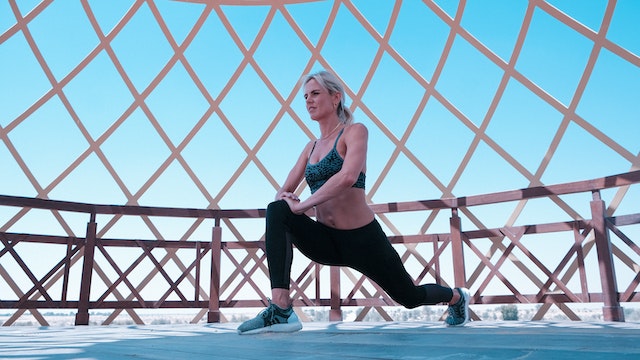
One of the biggest advantages? It’s naturally aligned with how your body is built to move. Functional exercises tend to place less strain on your spine and joints, helping reduce the risk of injury. Meanwhile, heavy strength training — especially at high intensity — demands near-perfect technique. Without it, you’re more likely to get hurt.
In short: both methods have their place. But functional training keeps things real, balanced, and safer for everyday strength.
Functional training exercises
No matter what kind of workout you're doing — cardio, strength, or functional — every session should start with a proper warm-up and end with a cool-down.
Warm-up exercises
An intensive warm-up begins with cardio: walking, jogging, jumping.
The next stage is a maximum emphasis on muscle groups and joints that will be involved in the training process.
The final stage is dynamic stretching for deep muscle and ligament work, increasing their elasticity and joint mobility. Dynamic stretching (not to be confused with static, when the body is motionless) is a repetition of forward and backward movements, while the body, hips and pelvis maintain the correct position.
Exercises without equipment, using your own body weight
Classes without equipment are related to basic functional training.
Push-ups — work the muscles of the core, back, shoulder girdle and arms.
Squats, lunges — engage the muscles of the thighs and glutes.
Pull-ups — work the deltoids, biceps, pectoralis major, and latissimus dorsi.
Hip extensions (think back raises or glute bridges) — engage the abs, back and buttocks.
Exercises for the abs — crunches, bicycle crunches, body lift.
Burpee — a complex exercise. High-impact and require good coordination — best for those with a baseline fitness level.
Jumps — engage the lunge muscles: the muscles of the thighs and gluteal muscles take on the load.
Exercises with equipment
The most popular equipment for home functional training is dumbbells, ankle weights, fitness bands, a jump rope, and special loops. The exercises below strengthen the muscle frame, increase strength endurance, and improve blood circulation.
Dumbbell Exercise Variations:
Forward Lunges
Squats
Dumbbell Bench Press
Bent-Over Dumbbell Curls
Standing Dumbbell Press
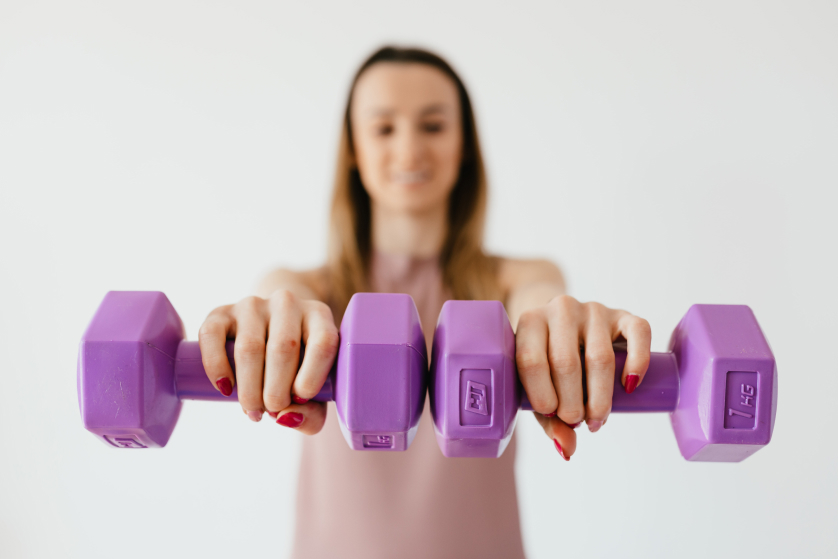
Band Exercises:
Standing arm pulls (band on forearms): open arms wide to activate shoulders and upper back
Plank band walks: step your hands side to side while keeping core engaged
Glute bridge: press hips up while keeping resistance on the thighs
Lateral walks with band on shins: step side to side in a half-squat
Side leg raises (lying, band on shins): lift leg against resistance to target glutes and hips
Train smart from home — start your StarFit workouts today with 70% off.
Can functional training help me lose weight?
Almost any functional training exercise involves the entire body. Accordingly, the more muscles that are involved in work, the more energy the body requires. First, it produces energy by oxidizing glucose, then from fat cells.
High-intensity HIIT training is especially effective in terms of weight loss. Therefore, if the goal is weight loss, functional training is a great option.
{{ post_13|raw }}
Sample high intensity circuit training plan
Scissors from a supine position
Jumps from a full squat with a 180-degree turn in the air and landing on a full foot
"Mountain climber"
Perform each exercise at the fastest possible pace for 25–30 seconds with 20–40 second intervals (depending on your fitness level). Do 4–6 circuits.
Important: due to the high speed and short breaks, high-intensity training puts a significant strain on the respiratory and cardiovascular systems. Fitness beginners are not recommended to start with circuit training.
What exercises are suitable for gaining muscle mass?
Alternating short bursts of explosive exercises with short rest periods allows you to build muscle mass while losing excess weight.
You will also gain muscle mass if you focus on functional strength exercises:
push-ups, pull-ups
exercises with weights (kettlebells, barbells, dumbbells)
If your focus is building muscle through functional training, aim to do strength-focused sessions 2–3 times a week. That gives your muscles time to recover and grow — which is just as important as the workout itself.
On alternate days, mix in cardio, mobility work, or stretching to support overall performance, recovery, and longevity. This kind of balanced approach helps you build a lean, athletic physique that moves as good as it looks.
Now, if your goal is to pack on serious muscle mass — think bodybuilder-style — you’ll want to incorporate traditional strength or powerlifting methods. But even then, don’t skip functional training. It builds coordination, joint stability, and movement quality — all essential for a strong, injury-resistant body.
Functional home workouts on the StarFit platform
Proper technique is everything when it comes to getting results (and avoiding injury), especially if you're working out at home. That’s where StarFit comes in. Our online programs are built by certified trainers who guide you through every move — with real instruction, real structure, and real progress.
